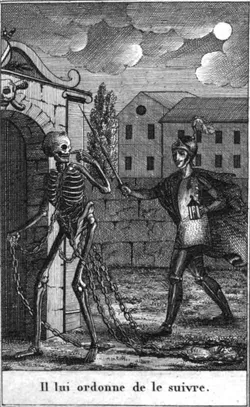SMLC - News and events
Congratulations to Fabio Camilletti on his BA/Leverhulme Small Research Grant for "Fantasmagoriana and the Others: Transnational Gothic and ‘Occulture’"!

Fantasmagoriana and the Others: Transnational Gothic and ‘Occulture’
Both Mary Shelley and John Polidori acknowledged that the inspiration for Frankenstein and The Vampyre had come to them from reading Fantasmagoriana, an anthology of supernatural stories translated from German into French. This project aims to contextualize Fantasmagoriana within the broader market of supernatural anthologies published across continental Europe between the early 1800s and the 1830s. Often published anonymously, compiled by people at the margins of the editorial market, these works assembled texts of various provenances with scarce or no attention to intellectual property: extracts from English novels, ‘real supernatural’ anecdotes, more or less authentic folktales; or accounts excerpted from the vast corpus of Baroque horrors, deliberately blurring the borders between fiction and non-fiction and providing post-Enlightenment Europe with ‘occultural’ narratives disguised as forms of entertainment. Fantasmagoriana is a perfect example of the challenges these texts pose to researchers: without clearly identifiable ‘authors’, often compiled by people at the margins of the literary market, and overtly ambiguous in the terms of their genre (fiction or non-fiction?), these collections – including Le Livre des prodiges (1802), Apel’s and Schulze’s Gespensterbuch (1811), Cuisin’s Spectriana (1817), Plancy’s Dictionnaire infernal (1818), Paban’s Démoniana (1820), and Nodier’s Infernaliana (1822) – still need to be fully mapped and reinstated as powerful sources for the circulation of Gothic motifs across Europe.
The project will start in January 2018, and is meant to be part of a broader set of initiatives for celebrating the bicentenaries of Frankenstein (in 2018) and The Vampyre (in 2019).
